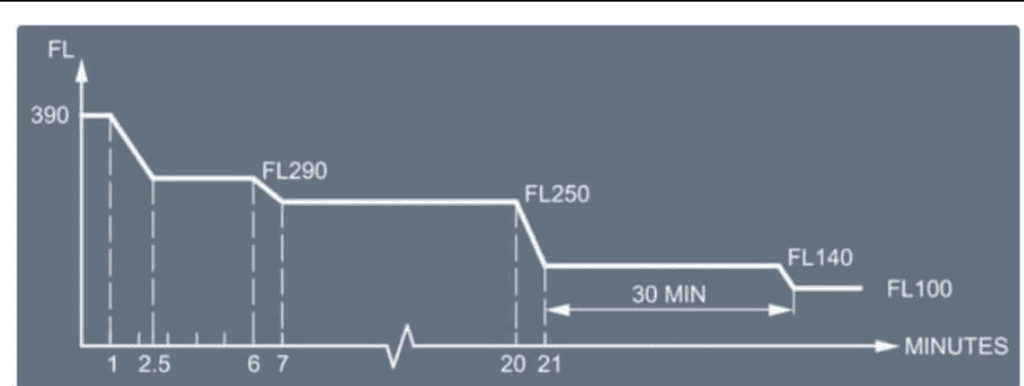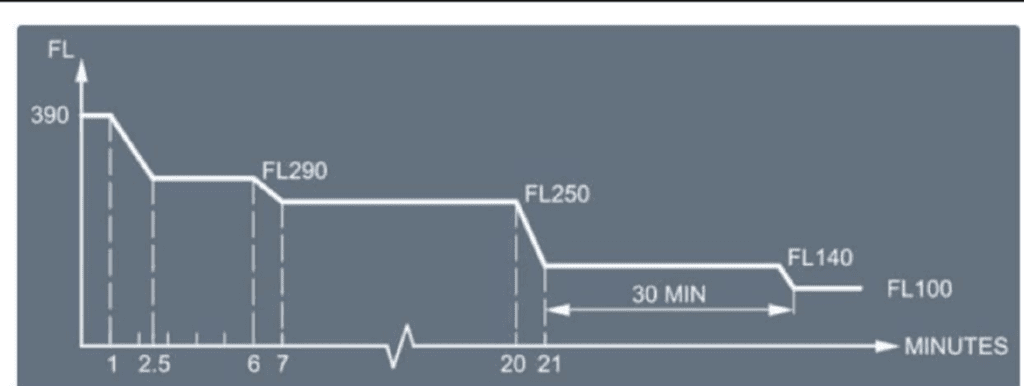
In most commercial airplanes, passengers receive oxygen through chemical oxygen systems that come in various duration options – typically 13, 15, or 22 minutes. Airlines often choose the 13 or 15-minute systems because they usually provide enough oxygen for emergency situations. In these cases, the aircraft can descend from its cruising altitude to 10,000 feet within the given time frame, and once at 10,000 feet, most passengers don’t require supplemental oxygen.

So, why might an airline opt for a longer-duration system? One key reason is when an airline operates routes over high terrain, quick descent to 10,000 feet may not be feasible. In such scenarios, pilots might need to perform a stepwise descent to safely reach 10,000 feet. Even a 13-minute system can sustain passengers over lower terrain for up to 45 minutes.
Imagine a scenario where an Airbus A320 is initially flying at 39,000 feet. After 1 minute, it starts a rapid descent to 18,000 feet, taking approximately 4 minutes. During this time, about 5 minutes of oxygen is consumed. The aircraft then maintains an altitude of 18,000 feet for 7 minutes before descending to 14,000 feet. At this point, all available oxygen is used up, but regulations permit flying at or below 14,000 feet without supplemental oxygen for the first 30 minutes. Therefore, the aircraft can continue at 14,000 feet for an additional 30 minutes before descending to 10,000 feet.
Now, what if an airline needs to operate over terrain that requires even more time at higher altitudes? This is where the 15 or 22-minute systems come in handy. They offer increased flexibility by allowing the aircraft to remain at higher altitudes for extended periods, enabling it to navigate more challenging terrain.
However, in situations where routes traverse extremely high terrain, the chemical oxygen system might prove insufficient to meet passenger needs. The chemical system operates continuously once activated, depleting its oxygen supply until it’s empty. To address this limitation, airlines may opt for gaseous oxygen systems.
These systems utilize charged oxygen cylinders and provide electronic control over the oxygen flow rate. This allows for a gradual reduction in oxygen flow as the aircraft descends, effectively extending the available oxygen duration and enabling the aircraft to maintain a higher altitude for a longer time.
It’s worth noting that while the gaseous system offers more control and prolonged oxygen supply, it is heavier and requires more maintenance compared to the chemical system.
Author – Nischal Paudel
Pilot






